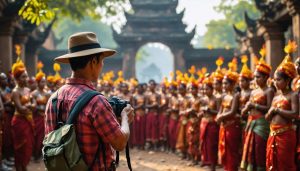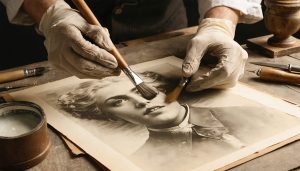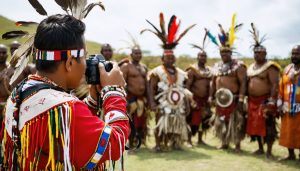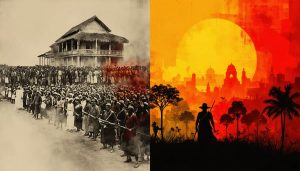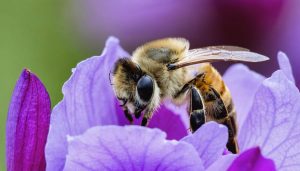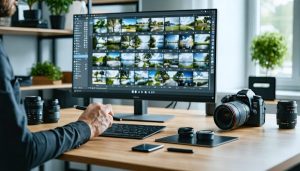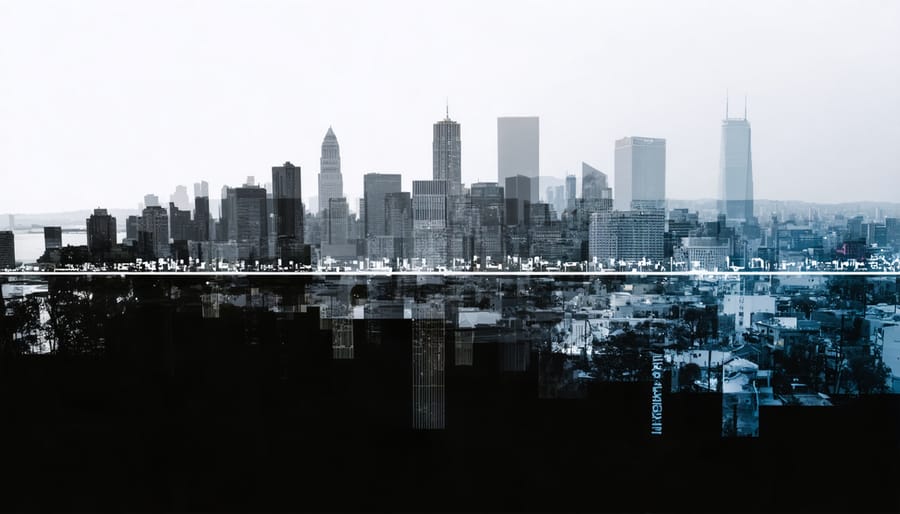
Every photograph tells a story, but crafting a deliberate photographic narrative transforms isolated moments into powerful visual testimony. Through methodical image sequencing, environmental photographers are documenting urban transformation and ecological change with unprecedented impact. The key lies not just in capturing compelling individual shots, but in weaving them into a cohesive story that resonates with viewers and catalyzes action.
Like chapters in a book, each image builds upon the last, creating an arc that draws viewers through time and space. Whether tracking the slow erosion of coastlines or the rapid metamorphosis of city skylines, successful photographic narratives combine technical excellence with emotional intelligence. They require photographers to think simultaneously as documentarians and storytellers, balancing aesthetic choices with journalistic integrity.
This thoughtful approach to visual storytelling has become increasingly crucial in our image-saturated world, where single photographs, no matter how striking, often fail to capture the complexity of environmental change. Through careful curation and strategic sequencing, photographers can create compelling narratives that not only document reality but inspire understanding and action.
The Art of Environmental Storytelling Through Photography
Composition Techniques for Impact
When documenting environmental changes, composition plays a crucial role in conveying your message effectively. Start by establishing a clear point of view that captures both the scope and details of your subject. Leading lines can guide viewers through the transformation of a landscape, while the rule of thirds helps emphasize critical elements of change.
Consider using repetitive elements to show patterns of environmental impact. For instance, when photographing coastal erosion, frame your shots to include consistent reference points that highlight the changing shoreline over time. This approach offers unique environmental perspectives that resonate with viewers.
Depth of field becomes particularly important when telling environmental stories. A wide aperture can isolate specific details while maintaining context, perfect for highlighting affected flora or fauna. Conversely, a narrow aperture ensures everything remains sharp, ideal for sweeping landscape comparisons.
Frame your shots with natural elements to provide scale and context. Including familiar objects helps viewers grasp the magnitude of environmental changes. Remember to maintain consistent composition across time-lapse sequences – this consistency makes before-and-after comparisons more impactful and helps viewers understand the extent of environmental transformation.
Time-Based Photography Methods
Time-based photography methods offer powerful ways to convey change and progression in your visual narratives. Time-lapse photography, perhaps the most well-known technique, compresses hours, days, or even months into seconds, revealing otherwise imperceptible changes. Whether capturing a flower blooming or urban development, time-lapse sequences create compelling stories through the acceleration of time.
Repeat photography, also known as rephotography, involves capturing the same scene at different times, sometimes years or decades apart. This technique is particularly valuable for environmental documentation and historical image preservation, allowing photographers to create direct visual comparisons of landscape changes, urban development, or ecological shifts.
To execute these techniques effectively, consistency is key. For time-lapse work, use a sturdy tripod and intervalometer, maintaining identical camera settings throughout the sequence. With repeat photography, detailed documentation of your original shooting position, camera settings, and seasonal conditions helps ensure meaningful comparisons.
Both methods benefit from careful planning and patience. Consider the story you want to tell and choose your timing accordingly – whether it’s capturing a bustling city’s daily rhythm or documenting glacial retreat over years. These techniques transform static images into dynamic narratives that reveal the subtle and dramatic ways our world changes over time.
Essential Equipment and Technical Considerations
Camera and Lens Selection
When crafting a photographic narrative, your choice of camera and lens can significantly impact your storytelling capabilities. While it’s true that any camera can capture a story, certain equipment choices can enhance your narrative potential.
For documentary-style narrative work, full-frame mirrorless or DSLR cameras offer excellent versatility and low-light performance. Their larger sensors provide better dynamic range, which is crucial when capturing scenes with challenging lighting conditions. However, don’t dismiss crop-sensor cameras, as they can offer advantages in reach and portability, especially when working in dynamic environments.
Lens selection is perhaps even more critical than camera choice. A 24-70mm zoom lens serves as an excellent all-around storytelling tool, offering both environmental context and intimate details. For narrative work, prime lenses like the 35mm and 50mm are particularly valuable, as their fixed focal length encourages more thoughtful composition and often helps maintain visual consistency throughout your series.
When documenting environmental subjects, consider weather-sealed equipment, especially if you’ll be working in challenging conditions. A telephoto lens (70-200mm) can be invaluable for capturing wildlife or distant elements of your story, while a wide-angle lens (16-35mm) helps establish scene context and environmental relationships.
Remember, the best camera for narrative photography is one that feels intuitive to use, allowing you to focus on the story rather than the technical aspects of operation.
Weather-Proofing and Environmental Challenges
Creating compelling photographic narratives often means working in challenging environments, and protecting your gear is crucial for success. Start by investing in weather-sealed equipment when possible, but don’t let a non-weather-sealed camera stop you from getting the shot. Instead, use practical solutions like clear plastic bags with a hole cut for the lens, or dedicated rain covers for more frequent use.
Moisture is your biggest enemy, so always carry silica gel packets and store your gear in airtight containers when not in use. In cold environments, avoid rapid temperature changes by letting your equipment gradually adjust in a sealed bag when moving between warm and cold areas. This prevents condensation from forming inside your camera and lenses.
For dusty or sandy locations, bring a rocket blower and microfiber cloths for regular cleaning. Keep lens changes quick and turn your camera off before switching to minimize sensor exposure. UV filters can protect your front elements, though be sure to use high-quality ones to maintain image clarity.
When shooting in extreme heat, keep your gear out of direct sunlight and store batteries in a cool place – they’ll drain faster in high temperatures. Consider using a white umbrella or reflector not just for lighting, but also to create shade for your equipment.
Remember, storytelling sometimes requires pushing boundaries, but never at the expense of your gear’s safety. A well-protected camera ensures you can continue capturing your narrative without interruption.
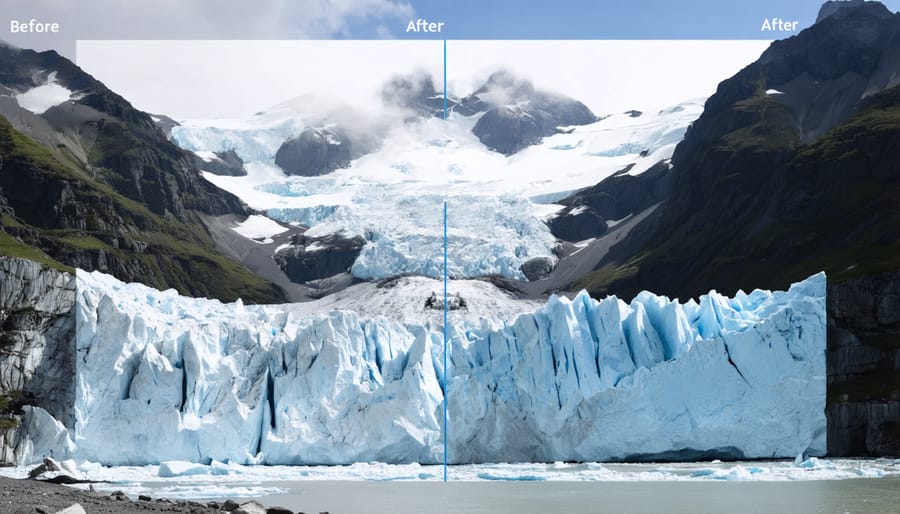
Creating a Cohesive Visual Story
Planning Your Narrative
Creating a compelling photographic narrative starts with a clear vision and careful planning. Begin by identifying your core story or message – what do you want your viewers to understand or feel through your images? This could be anything from documenting environmental change to capturing a personal journey.
Next, research your subject thoroughly. Understanding the context of your story helps you anticipate key moments and identify significant visual elements that will strengthen your narrative. Consider creating a shot list or storyboard to outline the key images you’ll need to tell your story effectively.
Think about the sequence of your images and how they’ll work together. Like chapters in a book, each photograph should build upon the previous one while moving the story forward. Consider including establishing shots that set the scene, detail shots that provide context, and emotional moments that connect with viewers.
Choose your technical approach carefully. Will you maintain consistent camera settings throughout for unity, or vary them to create different moods? Consider how lighting, composition, and color schemes can reinforce your narrative’s emotional impact.
Finally, gather any necessary equipment and plan your shooting schedule. Factor in timing, location access, and any permissions you might need. Remember that while planning is essential, stay flexible enough to capture unexpected moments that might enhance your story.
Remember to review and refine your plan as you shoot, adjusting your approach based on what’s working and what isn’t. The strongest narratives often evolve during the creative process while maintaining their core message.
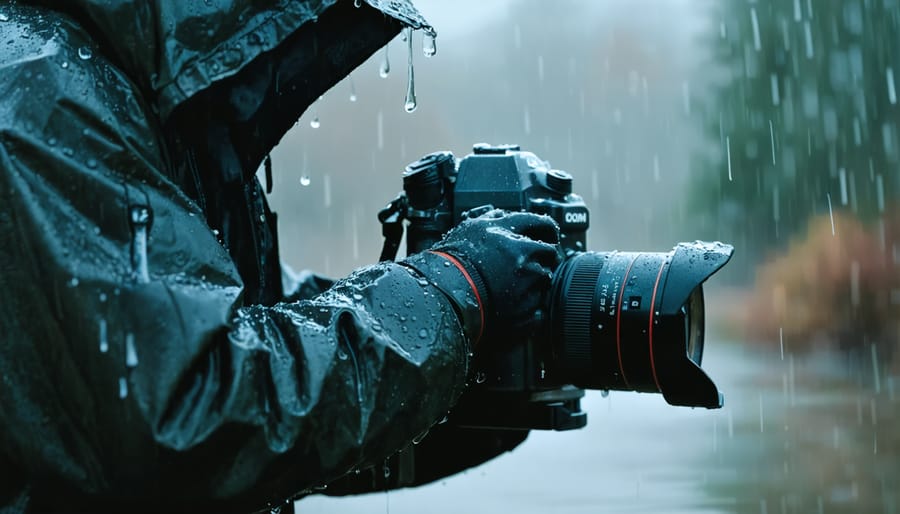
Sequencing and Presentation
The arrangement of photographs in a narrative sequence is as crucial as the images themselves. Think of your sequence as a visual journey, where each image builds upon the previous one to create a cohesive story. Start with a strong opening image that sets the tone and draws viewers in – this could be an establishing shot that provides context or a powerful detail that sparks curiosity.
Consider the rhythm of your presentation. Alternating between wide shots and close-ups creates visual variety and maintains viewer interest. For example, when documenting environmental change, you might begin with a landscape view, move in to show specific details of degradation, then pull back again to reveal the broader impact.
The classic three-act structure works well in photographic narratives: introduction, development, and conclusion. Your opening images should establish the setting and subject, middle images develop the story or conflict, and closing images provide resolution or reflection. Pay attention to visual transitions between images – similar colors, shapes, or compositions can create smooth connections that guide viewers through your narrative.
Digital presentation offers unique opportunities for sequencing. Online galleries, slideshows, and photo books each have their own rhythms and viewing patterns. Consider how your audience will interact with the images and adjust your sequence accordingly. Remember that viewers often spend mere seconds on each image, so make every transition count.
Real-World Applications and Impact
Case Studies
Let’s examine three groundbreaking environmental photography projects that showcase the power of photographic narratives. James Balog’s “Extreme Ice Survey” revolutionized how we visualize climate change through time-lapse photography of retreating glaciers. By positioning cameras at strategic points across the Arctic, Balog created a compelling visual story that transformed complex climate data into an emotionally resonant narrative that anyone could understand.
Sebastião Salgado’s “Genesis” project offers another masterful example of environmental storytelling. Over eight years, Salgado documented pristine landscapes and indigenous communities, similar to documenting heritage sites, but with a focus on untouched natural environments. His black-and-white compositions created a powerful narrative about Earth’s remaining wilderness areas, encouraging viewers to consider what we stand to lose.
The “Dear Earth” project by Conservation International takes a different approach, combining aerial photography with personal stories from local communities affected by environmental change. This multi-perspective narrative technique helps viewers understand both the macro and micro impacts of environmental degradation. The project’s success lies in its ability to connect global environmental issues with individual human experiences.
These case studies demonstrate how careful composition, timing, and narrative structure can transform environmental photography from mere documentation into compelling stories that drive awareness and action. Each photographer chose different technical approaches but maintained a clear narrative focus that made their work both accessible and impactful.
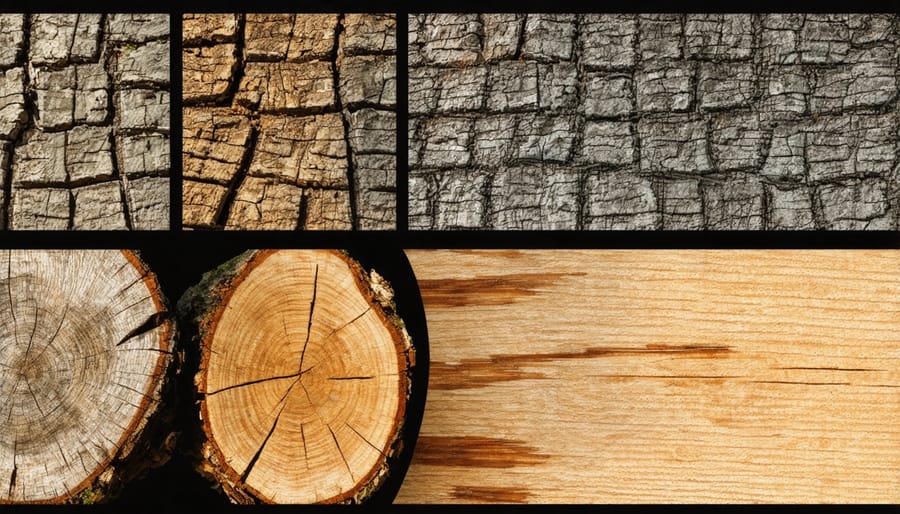
Making a Difference
Photographic narratives have emerged as powerful catalysts for environmental change, transforming complex ecological issues into compelling visual stories that resonate with both the public and policymakers. When photographers document environmental challenges through carefully crafted narrative sequences, they create emotional connections that statistics alone cannot achieve.
Consider the impact of James Balog’s “Extreme Ice Survey,” which captured the dramatic retreat of glaciers over time. These images didn’t just illustrate climate change; they sparked global conversations and influenced climate policy discussions at international forums. Similarly, the work of photographers documenting plastic pollution in our oceans has led to concrete policy changes, with several countries implementing stricter regulations on single-use plastics.
Environmental photographic narratives are particularly effective when they combine both the problem and potential solutions. For instance, photographers documenting deforestation often pair images of cleared landscapes with successful reforestation projects, offering hope alongside awareness. This approach helps viewers move from concern to action.
Local communities have also benefited from narrative photography projects. When photographers work with indigenous peoples to document their relationship with threatened landscapes, these visual stories often lead to better protection of both cultural heritage and natural resources. The key to creating impactful environmental narratives lies in building relationships with affected communities and presenting their stories authentically and respectfully.
Photography has long served as a powerful tool for documenting our changing world, and you now have the knowledge to create compelling environmental narratives through your lens. By combining technical expertise with storytelling elements, you can capture and share the important environmental transformations happening in your own community.
Remember that successful photographic narratives require both planning and patience. Start by identifying environmental changes in your area – whether it’s urban development, habitat restoration, or the effects of climate change. Document these changes systematically over time, maintaining consistent shooting locations and techniques while varying your perspective to tell a complete story.
Your work can make a significant impact. Local environmental organizations often seek photographers to help document their conservation efforts. Consider reaching out to these groups or starting your own project to chronicle changes in your neighborhood’s green spaces, waterways, or wildlife populations.
Don’t forget to share your visual stories with others. Social media platforms, local exhibitions, and community forums can help raise awareness about environmental issues you’ve documented. Your images might inspire others to pay closer attention to environmental changes and potentially take action to protect vulnerable areas.
Most importantly, keep developing your skills and pushing your creative boundaries. Every environmental story you tell through your lens contributes to a larger narrative about our changing planet and helps preserve these moments for future generations.

